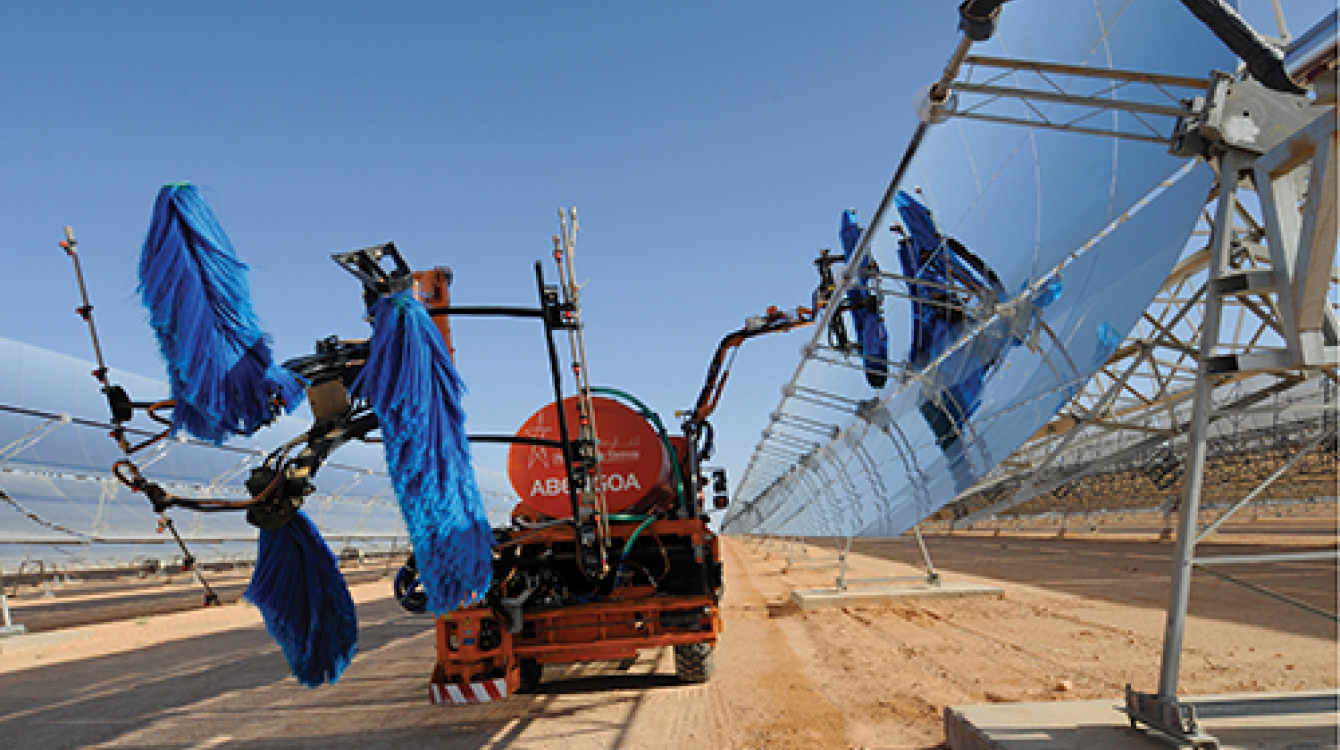New bond issue set to help Africa go ‘green’
New bond issue set to help Africa go ‘green’
Johannesburg, or Jozi, as it is affectionately known, is the largest commercial hub on the continent, attracting millions of visitors each year, including students, artists and business leaders. Its population of about 4.8 million people is projected to grow to 6.5 million by 2040, according to the World Population Review.
Faced with this record growth and its foreseeable impact on the city’s aging infrastructure and social services, Johannesburg’s Executive Mayor Parks Tau gave a nod to a greener path for development in his 6 May 2015 State of the City address. Among the promised innovations he listed were low-flush toilets and water-saving urinals to become a standard feature in Johannesburg homes, offices and commercial sites, alleviating the pressure on the city’s scarce water reserves.
Organic waste is to be harvested for fuel and energy, and solar heaters and smart metres installed to reduce the consumption of electricity. Furthermore, to lower pollution, he hopes to reduce the commuters’ reliance on private vehicles in favour of walking and biking. The mayor also promised to improve the public transport system and switch to diesel fuel to lower the city’s carbon footprint.
To finance these initiatives, the city auctioned its first ever “green bond” on the Johannesburg Stock Exchange (JSE) last June. The bond, which is worth $143 million and is expected to mature in 2024, was 150% oversubscribed – a success! In a speech delivered shortly after the listing of the bond, Mayor Tau said it was a clear demonstration of “investor confidence in the City of Johannesburg and commitment to environmental stewardship and climate change.”
A bond is a type of loan or an IOU which companies, governments or banks use to finance projects. The issuer is obliged to pay back the debt within a time agreed and with a certain interest. What warrants the “green” label is that the proceeds are allocated to climate and environment-friendly projects. By issuing this type of bond, Johannesburg became not only a pioneer in Africa, but also within the C40 Cities Climate Leadership Group, a network of megacities sharing best practices and feasible solutions to changing weather patterns.
Green bond allure
Green bonds are not different from conventional bonds in their pricing. Much of their allure lies in the fact that investors feel they are being “socially responsible” and that they are having a positive impact on the environment. According to the World Bank’s senior sustainability advisor, Laura Tlaiye, investors are increasingly recognizing the threats environmental degradation and climate change can create for long-term financial value, and are considering it when they choose their investments.
At the same time, investors are also drawn to these fixed-income green loans that promise regular returns and a full refund of the principal amount once the bond has matured. And in the case of the World Bank, one of the largest financiers for climate-smart projects in developing countries, their bonds bring triple “A” ratings, indicating they are extremely safe and low-risk. But as the market expands, so does the need for more clarity on how the capital raised is used. International institutions providing development financing, like the European Investment Bank (EIB), were the first to enter the green bond market in 2007. A year later, the World Bank joined forces with the Swedish financial group, Skandinaviska Enskilda Banken AB (SEB), to respond to a demand by Scandinavian pension funds looking to invest in environmentally friendly fixed-income products. Since then, the World Bank has continued to raise a lot capital for projects that seek to mitigate climate change in developing countries or seek to help affected people adapt to it.
So far, Tunisia has received a loan of over $30 million to promote better water management by using the country’s irrigation and drinking water more efficiently, while Morocco has successful applied for funds to build North Africa’s biggest solar power plant in an effort to curb its reliance on coal and other fossil fuels. To date, the bank has issued the equivalent of $8 billion in green bonds through more than 90 transactions in 18 currencies.
Socially responsible investors
Climate change is presently one of the greatest challenges confronting the developed and the developing world, warns the African Development Bank (AfDB), which set up a green bond programme in 2013. Without a concerted effort to reduce greenhouse gas emissions, echoes the International Finance Corporation, an affiliate of the World Bank, the earth’s temperatures could rise considerably within this century. In order to keep global temperatures below 2 degrees Celsius as agreed by negotiators during the United Nations Framework Convention on Climate Change (UNFCC) negotiations.
Business editor and author Mark Gunther, in the Yale Environment 360 online magazine, questions whether green bonds could “bankroll a clean energy revolution” and is uncertain where the money would come from. In a sense, he argues, green bonds are the latest example of “themed bonds for a specific purpose ” pointing to the 1862 civil war bonds that helped finance the US army and World War II bonds sold by celebrities at the time.
With the market raking in billions of dollars a year, it seems the appetite for these new debts is growing as well as the emergence of new types of issuers as evidenced by the case of Johannesburg. In March 2014, corporations like Toyota joined the fray to fund consumer loans for electric and hybrid cars. During the same period, the global consumer goods company Unilever and the French utility company GDF Suez of France issued green bonds to finance their renewable energy and energy efficiency projects.
Although there is no market standard for the definition of green, Marilyn Ceci, managing director and head of Green Bonds at JP Morgan wrote in the global knowledge sharing platform called Meeting of the Minds, in February 2015, that there are the Green Bonds Principles (GBP), which serve as voluntary guidelines on transparency and disclosure and are endorsed by environmental groups, investors and other issuers.
Transparency
The four components of the GBP include a description of how the proceeds of the bonds are to be used, an outline of the decision-making process disclosing the criteria used to review and determine the eligibility of the project, as well as tracking the proceeds and reporting on how they are being used at least once a month.
The World Bank initially set the bar high with its rigorous six-stage selection, approval, review and reporting process. The eligibility criteria are verified by experts from the Norway-based Centre for International Climate and Environmental Research (CICERO). Interested investors can check the institution’s website to get detailed updates on the projects, complete with pictures, graphics and summaries.
The World Bank applies a “gold standard” in the selection of its eligible projects. For example, the bank’s green bond portfolio will not include nuclear projects or those that deal with natural gas extraction by fracking. The bulk of the bank’s green bond projects are in middle-income countries like Mexico, China and Africa’s Maghreb region like Egypt, Tunisia and Morocco whose low-carbon projects funded by the World Bank are in full swing.
Projects in sub-Saharan Africa receive support through the International Development Association (IDA), the bank’s fund for the poorest, which doles out “low-interest loans, credits or grants from donors rather than from capital markets”.
However, while African countries south of the Sahara have made a grand debut into the international debt market scene, their presence in the green bond market is nascent. For now it seems, Johannesburg is leading having listed the first “African green city bond” in the region.




















